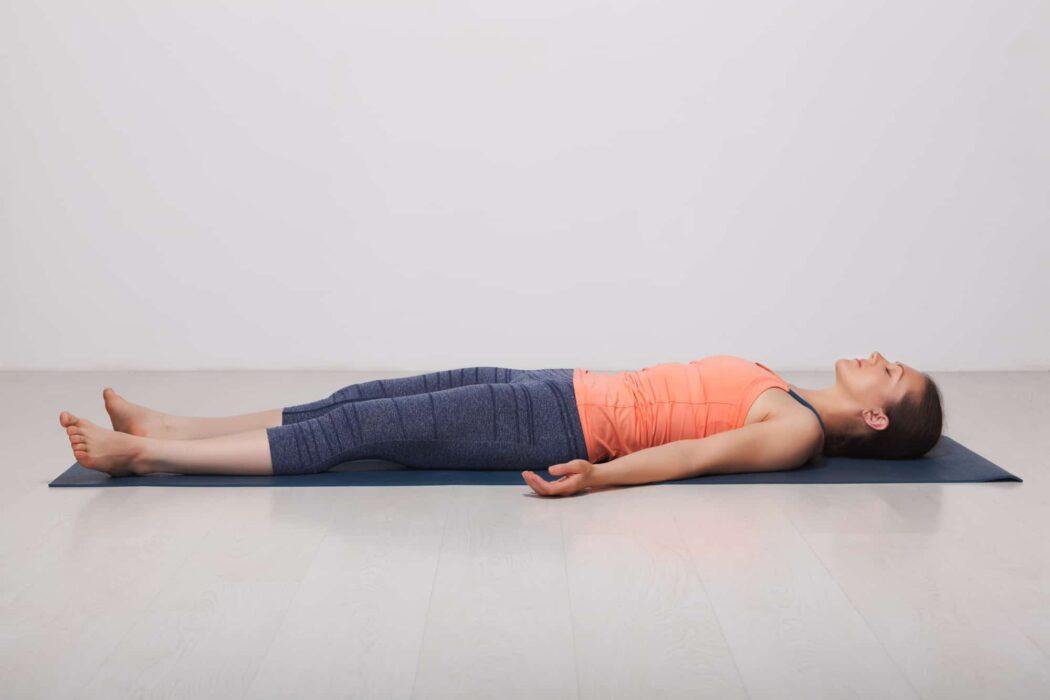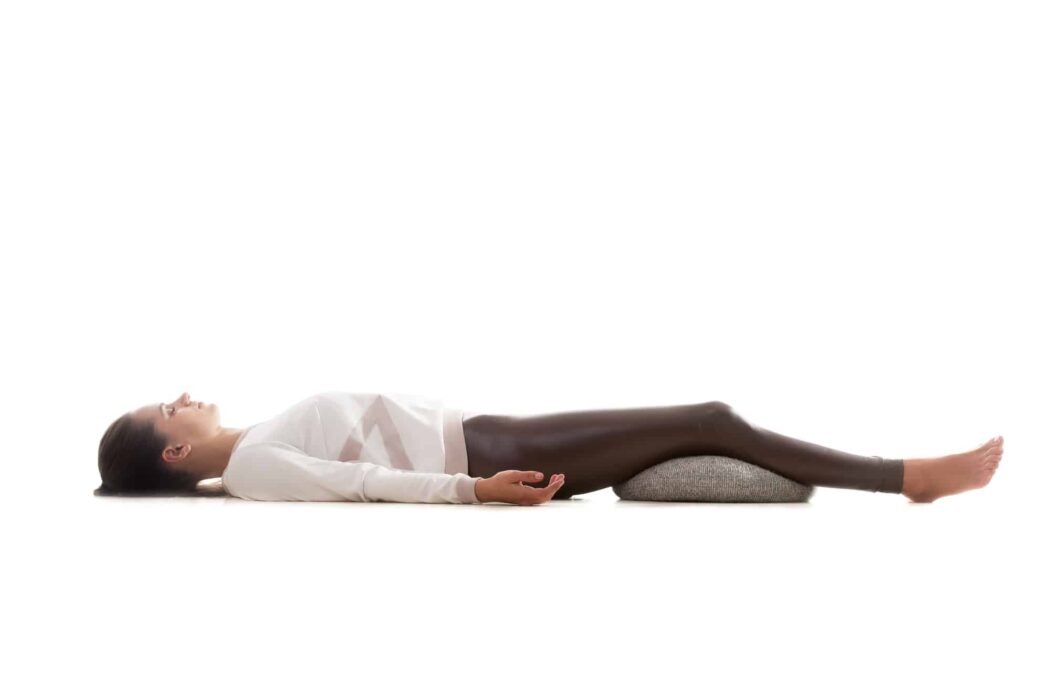
शवासन;
Śavāsana = sava = corpse
Goals: deep relaxation while being present and aware
Despite the easy look, this pose may be more challenging for you. This pose is all about concentrating on doing nothing, not falling asleep but being relaxed and conscious of the sensations in the entire body.
How to Get Into It
Usually, this pose finishes the practice.
- Lie down on your back. First, tuck your tailbone and press the sacrum to the mat. Legs bent, soles pressed to the floor.
- While keeping elbows on the mat, grab your hip bones with your hands, and as you inhale, pull your upper body up and away from your pelvis.
- After that, slowly lay each vertebrae on the mat until you reach the surface with your occiput.
- Lay your hands on both sides of the body, palms up. Don’t press your hands to the corpus; leave enough space for the air to circulate in your armpits.
- Legs wide with soles relaxed and facing to the sides.
- Eyes closed
- Scan the whole body with the attention to find and relax the tensed areas, be it inside or outside the body.
- Breathe deeply and observe the body, thoughts, and breathing. Stay focused on the sensations.
- Hold for 5-10 minutes.
- To get out of the pose, move your fingers and toes, bend your legs, and place soles on the mat. Then turn legs and the whole body to the right and slowly sit down on the mat.
Benefits
- Improves concentration and connection with body awareness
- Slows down the heart rate
- Allows deep rest and starts the restoration processes in the body after the practice
- Helps to distribute the energy gained during the session throughout the body
- Reduces muscles tension and lower back pain as the muscles can relax better without vertical load
Common mistakes
Going too fast in or out of the pose
The common mistake almost all new students make in a yoga class is rushing. As the Corpse pose seems so easy to do, many don’t take enough time to dive into it. This leads to incorrect placement of the bones and inability to relax.
Rushing out the pose doesn’t allow your body to adjust to a standing or sitting position, as it needs some time.
Inability to focus
It may seem funny, but many people can’t handle lying on the floor “doing nothing.” Soon thoughts start swirling in their heads, and they try to hop out of the pose and rush somewhere their mind pushes them.
Still, practicing Savasana is a great way to maintain better concentration, clear your mind from the mental and emotional garbage of the day, and just unwind after a sweaty yoga session.
How to modify?
There are several variations of the pose. You will need a prop to support you in this position. A cushion, bolster or towels will work well for this.
The natural lower back curve
Use a towel or a thin blanket under your lower back as you go into the Savasana pose. One edge of the blanket should go under the waistline, another – under your shoulders and head. Don’t make the prop too thick; adjust the thickness for the natural curve of your spine.
Support legs
Use a bolster or a chair under your knees. Bend knees, move your pelvis closely towards the chair (ideal angle 90 degrees between your ankles and thighs). Relax your legs on the supportive surface while pressing the lower back to the floor. Enjoy the feeling of more profound relaxation in the back.

Precautions
There are no restrictions for practicing this pose. However, mind that the studio or room where you practice should be quiet with no distractions.